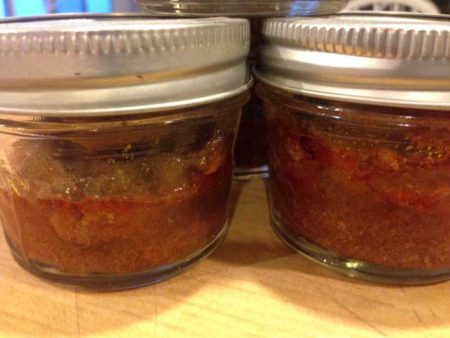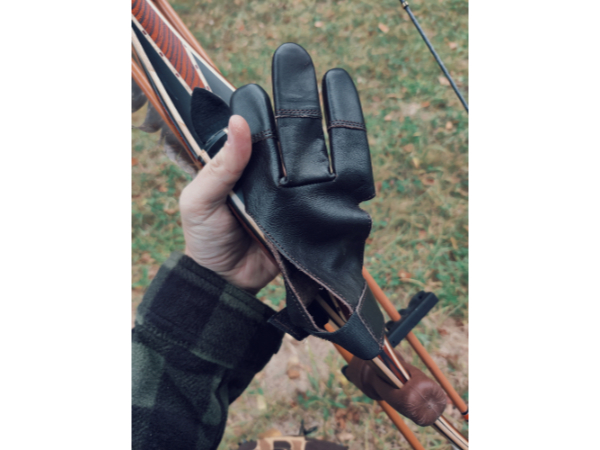The jackrabbit was only about 15 yards away when he stopped and gave me the stink eye. I had caught him slinking through the sage and he was now trying to determine if he should run or hold. He should have ran.
I drew back my longbow and let my wooden arrow fly. It was wide right and I felt it, then as if by divine dumb luck my arrow glanced off a small twig and hooked left. Directly into the back legs of the stationary jackrabbit. Now clearly injured and unable to run the chase was on. With no gun and no dog I must have shot at this rabbit 10 more times before landing the fatal blow. But that difficulty made the victory all the more sweet. The black cliffs of the Snake River Valley loomed over me and I could do nothing but smile at the good fortune. I slipped the hare into my backpack and kept hunting.
Next up was a series of near hits and two more kills with the longbow. It was the best day of stick bow rabbit hunting I had ever had. Back at home I aged the rabbits (another way of saying I let them lay on my cold, 40°, garage floor) for four days.
Aging meat is a sensitive topic, and I used to be adamantly against it. But I am now a convert, for the most part. After all aging meat is, for a lack of better terms, a controlled rot. Aging lets the enzymes already in the meat help in the tenderizing process.
Tenderizing jackrabbit is a good idea. Don’t get me wrong, I love the stuff, but others are not always in my camp. The old timers would say they were “trash” and “not worth the shot” – and so for years I would not eat them. Hell even Steven Rinella disparages the jackrabbit in his new book The Complete Guide to Hunting, Butchering, and Cooking Wild Game; Volume Two Small Game and Fowl calling them “loathsome.” But it always seemed wrong to value one animal over another without any first hand evidence. So I searched for a good way to make jackrabbit meat palatable.
Scouring the internet I found that not everyone hates on the jackrabbit. One likeminded proponent of the humble jack is Hank Shaw – the author, blogger and James Beard Award Winner. Hank comes to the rescue of the jack in a variety of ways – fantastically with his Sardinian Hare Stew. But also in his general praise for the beast. “Anyone who’s ever braised a jackrabbit until its tender already knows that they are a perfectly good meat – vaguely venison-like and completely lean” said Shaw.
With my now ready to clean rabbits I skinned, deboned and cubed them; getting about four pounds of meat in total. At this point I was at a loss of what to do with such a large batch. My freezer was full-ish and I was not planning on making sausage any time soon.
I did have a goal however—shelf stable meat. I wanted a “no refrigeration needed” meat that I could haul into the backcountry with me. Something other than jerky. I knew about canning meat, or jarring meat to be more specific, but I had never done it. But the idea of having a little jar of meat I could pop open and warm up intrigued me.
My first logistical problem came from the fact that canning meat requires a pressure canner – something I did not own. Honestly, I had always feared a pressure canner anyway. They reminded me of a bomb in the kitchen and can be tricky if not managed correctly. I kept having visions of my grandma at the stove and a loud BOOM! Pushing past those phobias I decided to take the plunge and get my shelf stable meat – via pressure canning.
With a quick search on Craigslist and I came up with an inexpensive pressure canner. The variety I ended up with is a “Victory Model” from World War 2. It is simply amazing – it even listed the amount of time needed to can rabbit. (Dandelion greens too!) Sure, a new canner would be cool but this old school model was all a guy needs – plus the $25 dollar price tag was hard to beat.
With my newly acquired jackrabbits and a new to me pressure cooker I set out to make shelf stable meat. Visions of tacos in the backcountry floating in my head. First I browned the cubed rabbit it in hot oil and then I tossed them in “taco” seasoning. Next I added them to jars with a little stock and canned them. When I was done canning the meat I could not wait to try it out. The next afternoon I opened a jar and made myself a quick quesadilla out of the meat. Unreal, I basically had shredded rabbit meat in a jar ready to eat whenever I am hungry.
Trying not to be flattered with my own success I let a master jackrabbit cook have a taste – I fed them to Hank Shaw in the backwoods of Idaho. “I’d never thought to pressure can them (jackrabbits) until I ate Randy’s canned jack tacos…Not sure of it was the hunger or not, but I am a convert.”
As with all preserving – keeping sanitary is a must. Clean hands, clean jars, clean lids – clean everything. With canning, and all preservation really, you are trying to defeat the forces of nature that rot food. A hard project and one that if not done right is downright dangerous. Follow the directions on your canner, be careful. That said, I am going to be canning meat a lot more in the future.
 Canned Rabbit
Canned Rabbit
- 2 pounds cleaned rabbit meat, diced
- ¼ cup canola oil
- 1 packet “taco seasoning”
- 2 cloves garlic, crushed
- ½ onion diced
- 1 cup chicken stock or water
Place a 12 inch heavy bottomed pan on medium heat for 5 minutes. Add half the canola and carefully add the rabbit meat a little at a time. Do not overcrowd the pan, the meat will not brown properly. Add more oil as needed to keep the pan from being dry bottomed. When all the meat is brown add it all back to the pan and toss with taco seasoning. Remove meat from pan to a plate. Add garlic, onion and chicken stock to the pan.
Bring the pan to a boil, scrape the bottom for all the good chunks of brown. This is called “fond” by the way. Remove pan from heat.
Next pack the meat into clean wide mouthed jars. Then add the pan drippings to each jar, distributing them evenly. But make sure to leave at least a ½ inch of head room on the jar. Top each jar with a clean lid and clean ring. Place into pressure canner and process according to manufacturer’s instructions. Be sure to follow all instructions for canning very carefully.







Leave A Comment